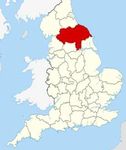Environmental improvement across a whole catchment: Esk Valley - iCASP
←
→
Page content transcription
If your browser does not render page correctly, please read the page content below
Environmental improvement across a whole
catchment: Esk Valley
Farmers across the catchment are working together to implement solutions to improve the
water quality in the Esk Valley. The river contains salmon and trout and efforts are
underway to boost the freshwater pearl mussels and migratory fish through tackling
problems with sediment and pollutants.
Summary
The network covers the whole catchment and 30% of the land area is farmed by COLLECTIVE
Countryside Stewardship Facilitation Fund (CSFF) network members. A key focus is what
can be done to improve water quality across the catchment, especially as it is a salmon and
trout river and sediment in the water is a major factor in the lack of recruitment of juvenile
migratory fish. Water quality is generally good across the catchment and of Good
Ecological Status according to the Water Framework Directive. Many other additional
environmental improvements have been added; sedimentation, nitrate and phosphate
pollution due to the agricultural and farming activities in the area, and complement the
main focus. For example wading birds benefit from the network tackling issues of water
quality. PUBLIC GOODS
Objectives
• Support for the Pearl Mussel and Salmon Recovery Project.
• Improvements to water quality across the whole catchment by tackling
sediment and pollution issues.
• Maintenance and support for historic and traditional National Park landscapes Water quality
and features.
• Address disconnect between maintenance of the iconic traditional landscapes
in the catchment and the systems designed to reward this
• Improving skills and understanding of issues and the measures to tackle them
Pearl mussel; Migratory
fish species' juvenile
recruitment to the river
Cultural heritage
Credit: F. Hugill Credit: Creative Commons
Problem description
There is a long history of action in the River Esk catchment seeking to improve its
Landscape and scenery
ecological status so that an iconic species previously found in the river such as the
Freshwater Pearl Mussel and species such as salmon and migratory trout do not
ultimately go extinct. As a salmon and trout river that has supported recreational
fishing, previous action and funding has often focused at the economic level.
The CSFF is focused on the environmental and ecological aspects of the
Soil quality (and health)
catchment, specifically from the perspective of those farming and managing the
land. The CSFF aims to support efforts by the Esk Pearl Mussel and Salmon
Recovery Project to re-introduce the Pearl Mussel to bolster the remnants of the
existing population, through improving the water quality in the river. For this iconic
species ‘good’ is not good enough, pristine conditions are required. This needs
collective action from farmers in both upper and lower reaches of the catchment
to reduce pollution and sedimentation problems. Rural viability and vitality
Legal notice: The compilation of the information provided in the factsheets has been done to our best knowledge and is subject to further analysis. Neither
the authors nor the contact persons of the presented cases may be held responsible for the use which may be made of the information contained therein.Data and Facts - Contract
Participation: 59 farms are involved in the contract solution at the current time. The area of
implementation is the Esk Valley catchment, including both upper and lower reaches. The
total land area encompassed by the network is 10,514 hectares.
Involved parties: Three major types of partners are involved in the CSFF group; farmers,
Recreational
network facilitator and funding body. The facilitator of the group is employed to bring the
access / Quality and
Improvements to security of group together, organise meetings and invite key stakeholders and experts to provide training
physical and as well as bring new members into the scheme. They also oversee the expenses of
products
mental health participants and will apply for funding renewal as appropriate. Natural England provides
funding, oversees the functioning of the group and provides crucial information on pressing
CONTRACT environmental needs in the region and the actions of other CSFF groups in the area.
Indirect effects: Riparian birds benefit from the actions taken, despite these not being a key
Government (with EU- focus of the actions.
funding) Management requirements for farmers: The maximum available annual grant is £50k. While
public – private there is no set requirement for numbers of meeting between the members, progress reports
are required every quarter along with expenses claims.
Contract conclusion: Controls/monitoring: Results are not monitored yet, but monitoring and evaluation is
Written agreement conducted through the claim expenses of the CSFF facilitators. Natural England determines
whether farmers and the CSFF is offering good value for money.
Conditions of participation: The minimum number of farmers needed for a CSFF to be set up
and be eligible for funding is 4 and the network should have no more than 80 members. The
land covered by all members’ farms must exceed 2,000 hectares; land cannot be included if it
Payment mechanism: belongs to a public body. The farmer’s/land manager’s land should be part of a catchment
incentive payments area to be included.
Context features
Landscape and climate: The area
Funding/Payments: encompassed by the Esk Valley
Government funding, CSFF is the whole Esk Catchment
up to £500 per year, which extends from the source of
per farmer in the CSFF the Esk all the way to the sea at
group Whitby: it is inside the National
Park. This catchment includes a
Length of contract: 3 range of land types from heather
years Credit: F. Hugill
moorland to arable fields, and
length of participation: includes SSSI, SPA and SAC-
3 years so far designated land as well as highly
intensive farmland. There is little
woodland in the region, with less than 13% of the total region designated as woodland; what
there is tends to be in linear strips. In the 1950/60s the Esk Valley was noted for its
haymeadows; there are few left now.
Start of the program:
2017 As much of the farming is very intensive, low numbers of farmers have joined the Countryside
End: 2020 Stewardship payment scheme. The activities carried out by those who have joined are limited
in the payments they attract and are mainly related to physical features such as walls that are
iconic of the wider region. The majority of the river is under Good Ecological Status according
LOCATION to the Water Framework Directive while the grassland soil pH is 6.0 for more than 68% in the
Esk Valley in comparison to the 53% average for the whole of the UK.
UNITED KINGDOM Farm structure: Along the entire length of the catchment the types of farms vary according to
the land and immediate microclimate. In the upper reaches there are moorland flocks of
sheep and herds of beef cattle. Lower down in the valley dairy farms are seen; over time
there has been a shift to a smaller number of larger dairy farms of which there are 8 in the
group. There are some small pockets of arable land in the valley as well. The farms tend to be
small compared to the average size of farms in the Yorkshire Dales, with an average farm size
of about 100 hectares. The farms are a mixture of owner-occupied and tenanted and this is
seen across the whole catchment. Land farmed by group members covers approximately 1/3
of the whole Esk catchment. Large numbers of the farmers are reliant upon farm payments to
stay in operation, and many of the farmers also have second jobs to bring in additional
income.
North Yorkshire UKE2ASSESSMENT OF CONTRACT SOLUTION
There are a mixture of different contract solutions being operated by CSFF members and
an overall assessment of their success is not possible at this time. The Esk Valley CSFF
? group of farmers benefits from the proximity with other CSFFs that allow for positive spill-
overs and common meetings between the groups. The expected target of water quality
improvements cannot be evaluated but attendance has been solid and several meetings
have taken place. Group participation and numbers have facilitated the uptake of funding
to conduct capital works of £300k value.
SWOT analysis
Main Strengths
1. Group identity: led to securing Main Weaknesses
additional income for
environmental management, 1. Lack of more farmers signing
stewardship and training up to the group as they are
2. At least 30% of the land in the uncertain of the benefits
catchment area is farmed by 2. Lack of consensus between
members of the CSFF (large enough group farmers on
to influence environmental changing/improving farming
conditions)
practices; not all see a personal
3. More members in the upper part benefit from ushering changes
of the catchment results in better
delivery of environmental benefits
Main Threats
Main Opportunities
1. Some concerns about
1. Good knowledge basis due to stewardship in post-Brexit
free soil testing allows for a agriculture
good start to the network and
solid goals to be set 2. A focus on iconic fish species
requires excellent water quality;
2. Farmers taking ownership of current water quality is not good
stewardship by embracing the enough so investing may not
environmental objectives set by yield benefits as high as they
governmental organisations might be
This project has received funding from the European Union’s Horizon 2020 research and innovation programme under grant
agreement No. 817949. The results presented reflect only the authors’ view, the Agency is not responsible for any use that may be
made of the information it contains. May 2020You can also read






















































